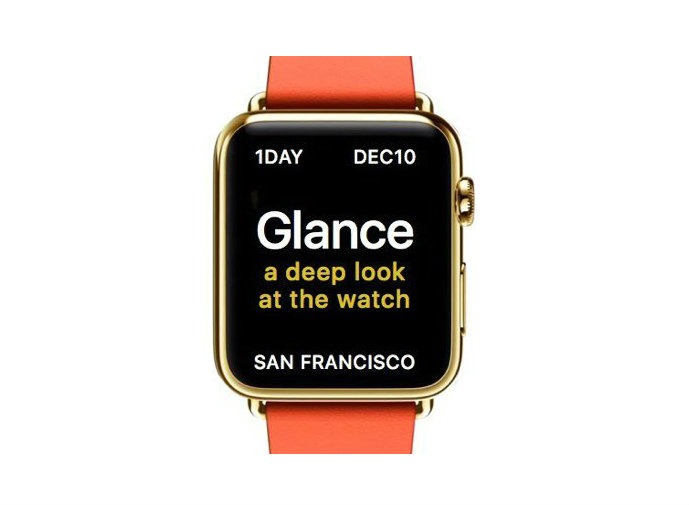In December, I attended Glance Conference in San Francisco, an event focused solely on the Apple Watch and its future – and the financial opportunities that surround it.

The Apple Watch and fashion, games – and glanceable UI
There were several panels and presentations that stood out. One panel focused on the fashion aspect of the Apple Watch. Wearables should definitely be aware of this dimension, and Apple seems to handle the cool factor well. One of the journalists on the panel pointed out that the Apple Watch is such a luxurious accessory by itself that some fashionistas don’t even bother to set the time on it!

I was especially impressed by the Finnish game developers Everywear Games present at the conference, who demonstrated how well games could work on the device. It seems a very bold statement that the smartwatch will ‘revolutionize gaming’, on the other hand, I’m very curious to see where it can go in the next few years. Josh Clark’s visually brilliant presentation on glanceable UI was often mentioned in the media afterwards. The characteristics of interactions with the smartwatch are very different than those with the smartphone (7 second ‘nanotasking’ versus 38 seconds – that calls for a completely different approach in app design as well).

Investors
The investors were slightly more skeptical about the smartwatch’s business potential, citing the impossibility of unpairing the device from the iPhone as its biggest drawback. Clearly, the target group for the ‘iWatch’ seems to be iPhone users. While this doesn’t seem to be a major problem for Apple-sporting Americans, the Asian market is dominated by Android devices. What’s more, one of the commonly asked questions was whether people truly need the Apple Watch when they have everything at their fingers on the smartphone. And what about those who just aren’t used to having anything on their wrists – will those who have worn regular watches before be more likely to strap a smartwatch on? I would say yes. Competition with activity trackers (like the Fitbit) was also discussed. Nevertheless, how Apple deals with those issues still remains to be seen. Philip Elmer-DeWitt summarized those concerns succinctly: seems like the investors are waiting for Apple Watch 2.

Hard numbers
It was great to be in what felt like a group of pioneers – many of those present were early adopters, eager to discover something new. Naturally, the conference didn’t start and end with just presentations, as there was plenty of time for more personal discussions. The excitement was definitely palpable, but – as I’m sure many did – I was waiting for the hard numbers. Just how well is the Apple Watch doing, and how satisfied are those who purchased it? Apparently, it’s doing tremendously well (Apple is taking the lion’s share of the smartwatch market, and is estimated to sell 8-12 million watches this year), and user satisfaction – measured by Wristly’s Bernard Desarnauts – is very high for a first-generation device. I wasn’t surprised by the latter, considering we’ve already mentioned Wristly’s research in our report, but it was interesting to see the most recent numbers on Apple Watch use, including the relationship between weight loss and using the Watch.

With such an early market, it’s natural that there are still doubts, and more questions often asked than answered. On the other hand, what I’ve heard at the conference convinced me that there is tremendous potential in the device, and I’m confident that Apple Watch apps can be strong products.





